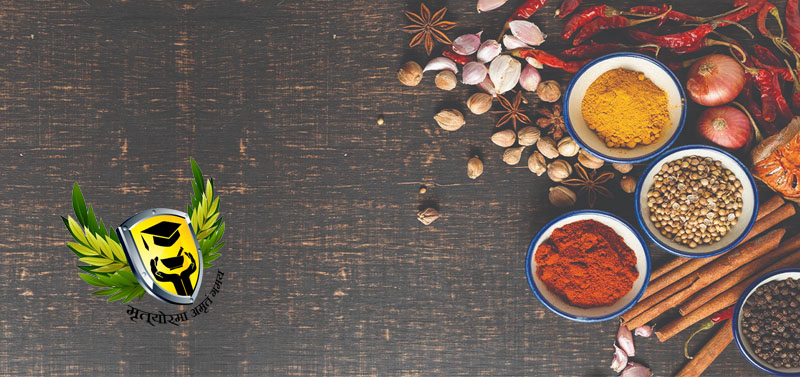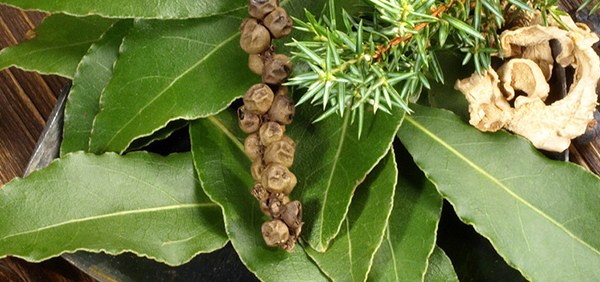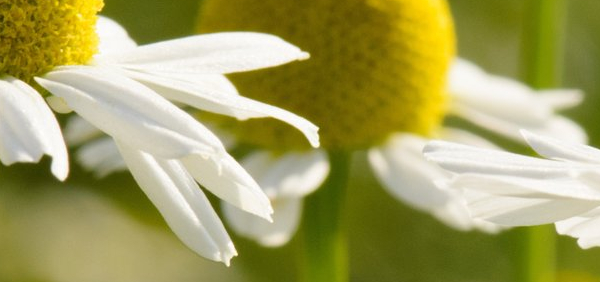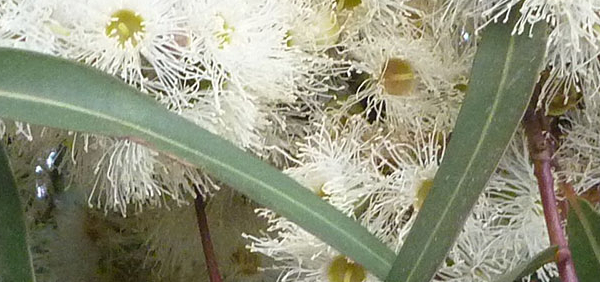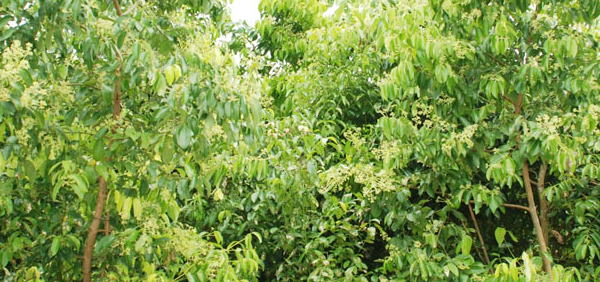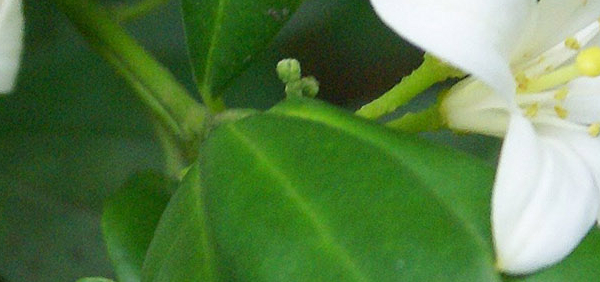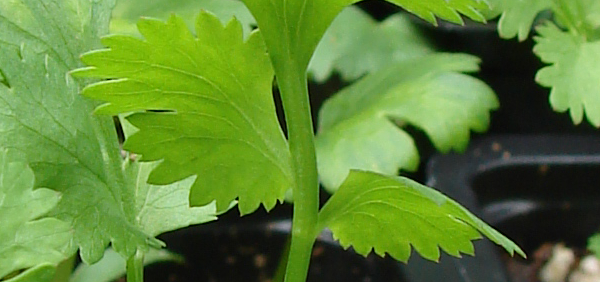bandhuka :
 Crataegus oxyacantha Linn., commonly known as Hawthorn, is one of the most widely used herbal plant
with diverse pharmacological actions.It possess antioxidant and collagen stabilizing action. Hawthorn is used to
treat a wide variety of inflammatory conditions, but primary use is treat hypertension, ischemic heart disease,
congestive heart failure and arrhythmia. The chemical composition of Hawthorn includes vitamin C, Flavonoids,
Glycosides, Saponins and Tannins,Cratategen, cardiotonic amines, Amygdalin ,pectins etc.
Crataegus oxyacantha Linn., commonly known as Hawthorn, is one of the most widely used herbal plant
with diverse pharmacological actions.It possess antioxidant and collagen stabilizing action. Hawthorn is used to
treat a wide variety of inflammatory conditions, but primary use is treat hypertension, ischemic heart disease,
congestive heart failure and arrhythmia. The chemical composition of Hawthorn includes vitamin C, Flavonoids,
Glycosides, Saponins and Tannins,Cratategen, cardiotonic amines, Amygdalin ,pectins etc.HISTORICAL AND MYTHOLOGICAL REVIEW:
Hawthorn was regarded as a valuable heart remedy as far back as the middle Ages. It was considered sacred in early times and believed to furnish the Crown of Thorns. Legend reveals that during AD30-63 Joseph of Aramathea came to England and planted his hawthorn staff in Glastonbury soil. Thus came to known as Glastonbury Thorn; grew and blossomed at Christmas and Easter as if in celebration of the Christian Year. The Celts used Hawthorn in May celebrations using it to dress maypoles and symbolic effigies, and associated it with fertilityTaxonomical Classification
Family: RosaceaeVERNACULAR NAMES
English: hawthorn (berry)Varities:
Crimson Cloud - A form with red flowers that are single and contain a white region in the center. The fruit is shiny red, and the plant is supposedly more resistant to leaf blight than Pauls Scarlet.
Pauls Scarlet (also known as Paulii) - This common cultivar features double flowers that are dark rose to red. Its stunning in flower, but very susceptible to hawthorn leaf spot and blight. Grows to 20 tall.
Snowbird (C. x mordenensis) - This plant is a Canadian selection of a hybrid with C. succulenta. The flowers are white and double, but fruit set is reportedly less than other forms. Also may be hardier than Toba, but disease resistance accounts vary widely, with some observers claiming severe leaf spot defoliation.
Toba (C. x mordenensis) - This plant is a Canadian selection of a hybrid with C. succulenta. It features double white blooms that age to pink and red fruit. The 12-15 tall plants are marketed as being leaf spot-resistant, but reports vary on this account.
Synonyms
Synonyms in Ayurveda: bandhuka, arkavallabha, baandhujivakaThe Genus name Crataegus is derived from the Greek word “Kratos”, which means “hard wood”
Rasa: Amla Madhura
Guna: Picchila
Veerya: Ushna
Vipaka: Amla
Karma: Vatahara
Cardiotonic, increases the force of contraction of the heart muscle, increases the efficiency of oxygen utilization by the heart, antiarrhythmic, improves cardiac metabolism, have protective action on blood vessel walls, coronary and peripheral vasodilator, sedative, anti-oxidant, diuretic, antihypertensive.
Cultivation:
It prefers sandy clay-loam soil and subhumid, temperate climate. It can grow well in low rainfall areas.Propogation:
Planting material is seed. It has two years dormancy. Seed germination is difficult and time consuming.Therefore vegetative propagation by stem cutting is preferred for raising saplings of C.oxyacantha. Further, vegetatively propagated plants produce better growth than that of raised from seeds.Harvesting:
C. oxyacantha comes to bearing after 5-6 years from planting in the field. Flowering and fruiting occur during April-May and fruits ripen during JulyAugust. Fruits are harvested when it is fully ripe.STANDARDIZATION:
Most of the availablehawthorn preparations have been standardized to 2%vitexin and/or 20% procyanidins per dose. Europeanproducts are standardized to 2.2% flavonoids. Mostof the preparations are available as dietarysupplements.Phytochemistry:
1 Vitamin C.2 Flavonoids : Quercetin, Hyperoside, Rutin,Flavonoglycosyls,Vitexin-4-rhamnoside.3 Glycosides.4 Oligomeric procyanidins (OPC) - epicatechol.5 Anthocyanidins and Proanthocyanidins (biflavans)6 Saponins and Tannins.7 Cratetegin (most prevelant in flowers > leaves >berries).8 Other chemical constituents: a) Cardiotonic amines: Phenylethylamine, Tyramine, Isobutylamine, O-methoxy phenylethylamine; b) Choline andacetylcholine; c) Purine derivatives : Adenosine,Adenine, Guanine, Caffeic acid; d) Amygdalin; e)Pectins; f) Triterpene acids : Ursolic acid, Oleonicacid, Crategolic acidPHARMACOLOGY:
Hawthorn Berry Extract Capsules
Parts used for medicinal purpose
Flower, Fruit, Leaves, ,Dosage:
1. Standardized extract - 250 mg three times a day.Substitute:
Crataegus (C. monogyna and C. pentagyna) havesimilar pharmacological activities and may be suitablealternativesAdultrants:
no adulterant knownControversy:
controversy result showed that hawthorn provides no symptomatic or functional benefit when given with standard medical therapy to patients with heart failure.Morphology:
It is deciduous small tree growing up to nine m in ht. Branches are grayish and spine scent. Leaves are 3.0-3.5 cm long, broadly ovate or rhombic, cuneate at base, deeply and sharply cut to two-thirds their width, coarsely-toothed, pubescent or glabrescent beneath. Petioles are almost equal to blade.Geographical distribution:
It is a temperate shrub or a small tree of forests, scrubs, foothills, wastelands etc. of north-west Himalaya from Indus to Ravi, at an altitude of 2000-3000 m mslECOLOGICAL ASPECT:
Woods, hedges, thickets etc on clays and heavy loamsPlant conservation:
Least ConcernGeneral Use:
Traditionally, fruit is used as home remedy for arteriosclerosis, hypertension, and sore throat in folk medicine. It is considered useful in congestive heart failure, coronary circulation problems, angina, and arrhythmias. It is used to increase cardiac output reduced by pulmonary disease and to treat hypo- and hyper-tension, atherosclerosis, hyperlipidemia, and Buergers disease. It is also used as a sedative, anxiolytic, antispasmodic, astringent, and diuretic. Hawthorn preparations are used as a wash for sores, itching, and frost-bite. Fresh fruit is effective in treatment of cardiac disorders of nervine origin. Extract of C. oxyacantha shoot possesses strong negative chronotropic, positive inotropic and coronary dilatory effects. Leaf is used to treat hypertension. C. oxyacantha also possesses antioxidant properties. Phenolic extract of its flower has antioxidative properties.Therapeutic Uses:
With the availableexperimental work and clinical research Crataegus’sprimary use has been recommended in the followingcardiovascular conditions:1. Hypertension2. Angina3. Arrhythmias4. Congestive Heart Failure (NYHA class I & II)5. Peripheral vascular disorders6. Antioxidant and lipid regulating agentSystemic Use:
- Fresh fruit is effective in treatment of cardiac disorders of nervine origin.
- Extract of C. oxyacantha shoot possesses strong negative chronotropic, positive inotropic and coronary dilatory effects. Leaf is used to treat hypertension.
- C. oxyacantha also possesses antioxidant properties.
- Phenolic extract of its flower has antioxidative properties.
Administration:
Hawthorn berries causes reduction in elevated blood levels of pyruvic and lactic acid, normalization of prolonged systole and prevention of ECG changes due to hypoxia. It is a valuable herb for a strong and healthy heart due to its powerful antioxidant, antiinflammatory and lipid-lowering properties.Pharmacological:
The drug fromflowers has anti-spasmodic, hypotensive, cardiotonic,diuretic and nervine-sedative properties. Hawthornis most valuable remedy for cardiovascular systemand considered to be one of the best cardiac tonicfound in plant kingdom. It dilates peripheral bloodvessels, increases metabolism in the heart muscle,dilates coronary vessels and improves blood supplyto the heart and thereby help in treating heart diseaseand mitigating symptoms in early stage of heartfailureClinical trials:
1. Ethnomedicinal and phytopharmacological potential of Crataegus oxyacantha Linn. – A reviewResearch:
1. Crataegus oxyacantha-A cardioprotective herb by S.K.Verma, Vartika Jain , D Verma, KhamesraPrecautions:
Toxicity studies:
Use in other system of medicine:
The fruits and flowers constitute a drug which is official used in many pharmacopoeias including theHomeopathic Pharmacopoeia of India.CONCLUSION:
Hawthorn, also known as Haw, Hedgethorn, Maybush, May blossom, May Day Flower, Ban-sangli(Hindi) and White Thorn; all these names correspondto the genus Crataegus (Gr. kratos = hardness ofwood), a member of Rosaceae family. It is a spinytree or shrub, may reach a height of 30 feet, but isoften grown as a hedge plant in Europe[1]. In India,it is found in the temperate Himalayas, Kashmir andHimachal Pradesh, at an altitude of 1800-3000metersKEY WORDS: Crataegus oxyacantha, anti-inflammatory, anti-oxidant,bandhuka
- » Classification and names of bandhuka
- » Synonyms and definitions of bandhuka
- » Drug Properties of bandhuka
- » Chemical Constituents of bandhuka
- » Standardization of bandhuka
- » Parts used and Dosage of bandhuka
- » Morphology and Histology of bandhuka
- » Distribution and Conservation of bandhuka
- » Cultivation of bandhuka
- » bandhuka in the market
- » Medicinal Uses of bandhuka
- » Researches and clinical trails of bandhuka
- » bandhuka in other sytems of medicine
- » Ayurvedic formulations with bandhuka
- » Images of bandhuka


